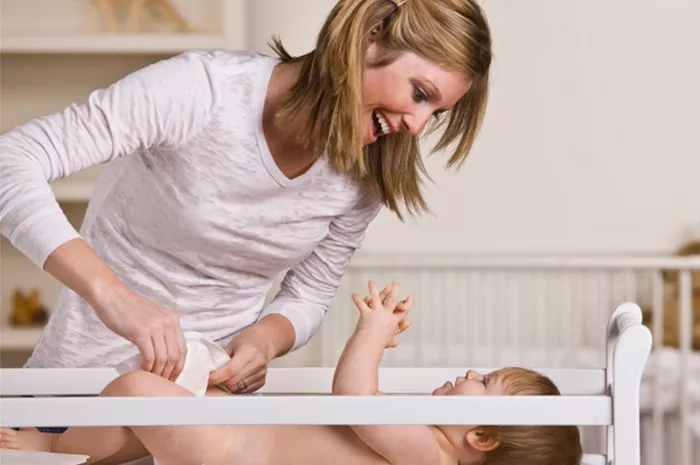Welcoming a newborn into the family brings immeasurable joy, but it also comes with a host of responsibilities, especially when it comes to ensuring their safety and well-being, particularly during sleep. Establishing proper sleep habits from the outset is paramount for both the baby’s health and the peace of mind of parents. One of the fundamental aspects of this is knowing how to lay a newborn down to sleep safely. In this comprehensive guide, we’ll delve into the best practices recommended by pediatricians and experts to create a secure sleep environment for infants.
Back-to-Sleep Position: Reducing the Risk of Sudden Infant Death Syndrome (SIDS)
The American Academy of Pediatrics (AAP) unequivocally recommends placing babies on their backs for all sleep times—naps and at night. This practice, commonly referred to as the “back-to-sleep” position, has been shown to significantly reduce the risk of Sudden Infant Death Syndrome (SIDS) compared to other sleeping positions.
Babies who sleep on their backs are less likely to experience respiratory issues or suffocation during sleep. Even if a baby spits up during sleep, their anatomy and gag reflex help prevent choking while sleeping on their backs. While it’s natural for parents to worry about their baby’s comfort in this position, rest assured that most infants adapt well to sleeping on their backs.
Sleep Surface: Optimal Conditions for Safe Sleep
Equally important to the sleeping position is the choice of sleep surface. Experts advise using a firm, flat sleep surface, such as a mattress in a safety-approved crib covered only by a fitted sheet. Avoid inclined surfaces or soft bedding, as they increase the risk of sleep-related deaths, including suffocation or entrapment.
It’s crucial to emphasize that newborns should never sleep on couches, armchairs, recliners, bean bags, or adult beds. These surfaces pose suffocation hazards due to the risk of the baby becoming trapped between cushions or against adult bodies.
Room Sharing: Promoting Safety and Bonding
The AAP recommends room-sharing with your baby for the first six months of life. This practice has been shown to lower the risk of SIDS by up to 50%. Having the baby in close proximity allows for easier monitoring and quick response to their needs during the night.
However, while room-sharing is encouraged, it’s essential to ensure that the baby sleeps in their own bassinet or crib. This separation helps avoid hazards from adult pillows and blankets, reducing the risk of suffocation or accidental overlaying.
Safe Sleep Environment: Creating a Nurturing Atmosphere
A safe sleep environment is one that is free of potential hazards. Keep soft bedding out of the baby’s sleep area—no blankets, pillows, bumper pads, or soft toys. These items can pose suffocation risks, especially if the baby rolls over during sleep.
Additionally, avoid covering the baby’s head or allowing them to get too hot. Overheating has been linked to an increased risk of SIDS. Instead, dress the baby in sleep clothing, such as wearable blankets, if concerned about warmth. These garments provide adequate insulation without the risk of suffocation.
Avoid Unsafe Sleep Products: Making Informed Choices
In recent years, there has been a proliferation of sleep products marketed to parents as aids in reducing the risk of SIDS. However, not all of these products are safe or effective. It’s essential to exercise caution and prioritize evidence-based recommendations.
Avoid inclined sleepers, which have been associated with infant deaths. These products can cause the baby’s head to tilt forward, compromising their airway. Similarly, weighted products are not safe for infants, as they can restrict movement and increase the risk of suffocation.
Be skeptical of any sleep products claiming to reduce SIDS risk without sufficient evidence to support their claims. When in doubt, consult with a pediatrician or trusted healthcare professional before introducing any new sleep products to your baby’s routine.
Soothing Techniques: Promoting Restful Sleep
Creating a calming bedtime routine can help soothe the baby and prepare them for sleep. Make sure the baby is fed, burped, and has spent quiet time in your arms before laying them down to sleep. Establishing a consistent pre-sleep routine signals to the baby that it’s time to wind down.
Experiment with soothing sensations like rocking or gentle swaying to help lull the baby into a peaceful slumber. Some infants find comfort in sucking on their thumbs or pacifiers, which can also aid in self-soothing and promote longer stretches of sleep.
Throughout the day, engage with the baby through gentle play and interaction. This not only fosters bonding but also helps regulate their sleep-wake cycle, making it easier for them to settle into restful sleep at night.
Conclusion
Laying a newborn down to sleep may seem like a simple task, but it’s one that requires careful consideration and adherence to best practices for infant sleep safety. By following the guidelines outlined in this article—placing the baby on their back, providing a firm sleep surface, room-sharing for the first six months, creating a safe sleep environment, avoiding unsafe sleep products, and incorporating soothing techniques—you can help ensure that your little one enjoys restful and secure sleep, setting the stage for healthy development and well-being in the early months and beyond.


